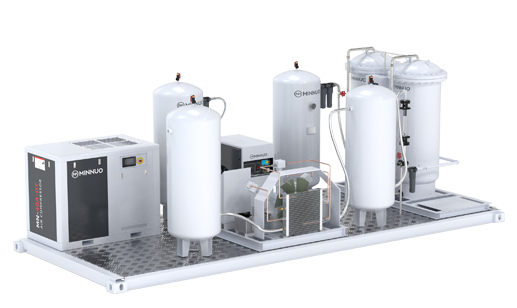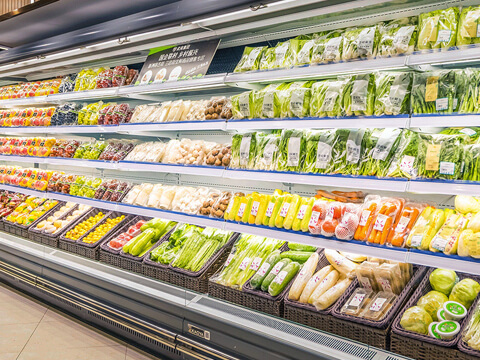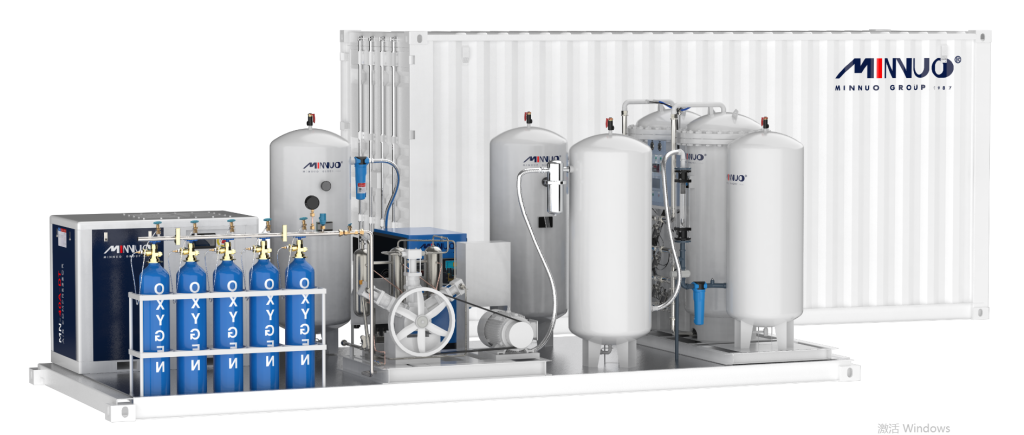The pharmaceutical industry prioritizes the quality and effectiveness of its products, as they have a direct impact on patient well-being and even survival. To ensure strict adherence to high standards, nitrogen gas plays a crucial role in various stages of pharmaceutical development and production. Let’s explore the versatile and critical uses of nitrogen in the pharmaceutical industry.
Pharmaceutical Packaging: Inert Protection for Product Integrity
With its inert properties, nitrogen is commonly employed to exclude or displace oxygen in specific areas, packages, and containers. This applies to pharmaceutical products as well. Nitrogen gas is flushed into packaging to extend shelf life, maintain product quality, and safeguard integrity. Nitrogen is also used in the digital printing of pharmaceutical packaging. The use of an on-site nitrogen generator is ideal for pharmaceutical packaging, providing a reliable supply of nitrogen and eliminating dependence on external suppliers. It ensures uninterrupted operations and readily available nitrogen with the required purity levels (typically 99.999%) for pharmaceutical applications.
Blanketing: Preventing Combustion and Oxidation
In pharmaceutical and medical facilities, nitrogen is often used to blanket certain areas, effectively displacing oxygen. By reducing the presence of oxygen, nitrogen significantly minimizes the risks of combustion, fire, and oxidation of products and equipment. This contributes to maintaining safety and product integrity.
Laboratory Processes: Enabling Advanced Analysis and Enhanced Efficiency
Nitrogen plays a vital role in complex laboratory processes, particularly in the analysis and transportation of chemicals. In chromatography, a technique used to separate mixtures and determine analyte proportions, nitrogen is utilized in conjunction with mass spectrometry (MS) in a process known as liquid chromatography-mass spectrometry (LC-MS). Nitrogen performs the following functions during LC-MS:
Nebulizer Gas: Nitrogen produces a mist of charged droplets, resulting in solvent and ionized sample separation.
Carrier Gas: It sprays the sample solution into a heater, facilitating ionization.
Curtain Gas: Nitrogen acts as a barrier, ensuring the separation of sample and solvent ions and preventing solvent passage into the MS vacuum chamber.
Maintaining high purity levels (minimum 95% and sometimes up to 99%) in nitrogen is crucial for accurate analysis in LC-MS. Impurities in gas can compromise analysis accuracy and cause equipment issues. By reducing oxygen and water content, nitrogen extends the lifespan of chromatography columns, reducing replacement costs and minimizing downtime.
Partnering with Minnuo for Nitrogen Solutions in Pharmaceuticals
Minnuo specializes in providing nitrogen solutions for sensitive applications, making us the preferred partner for laboratories and the pharmaceutical industry. Our comprehensive range of on-site nitrogen and oxygen generation and air treatment solutions meets the industry’s stringent standards. How can we assist you? Contact your Minnuo representative today!






 sales2:+86 17506119168
sales2:+86 17506119168

